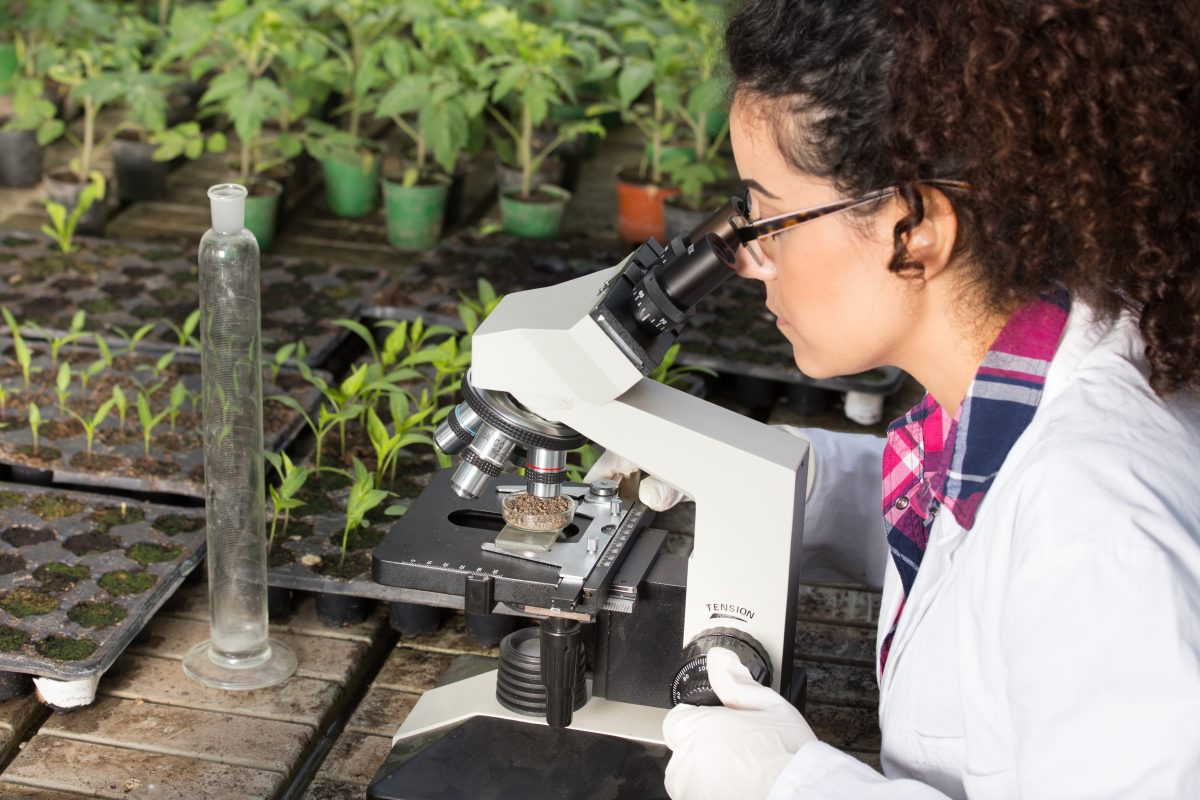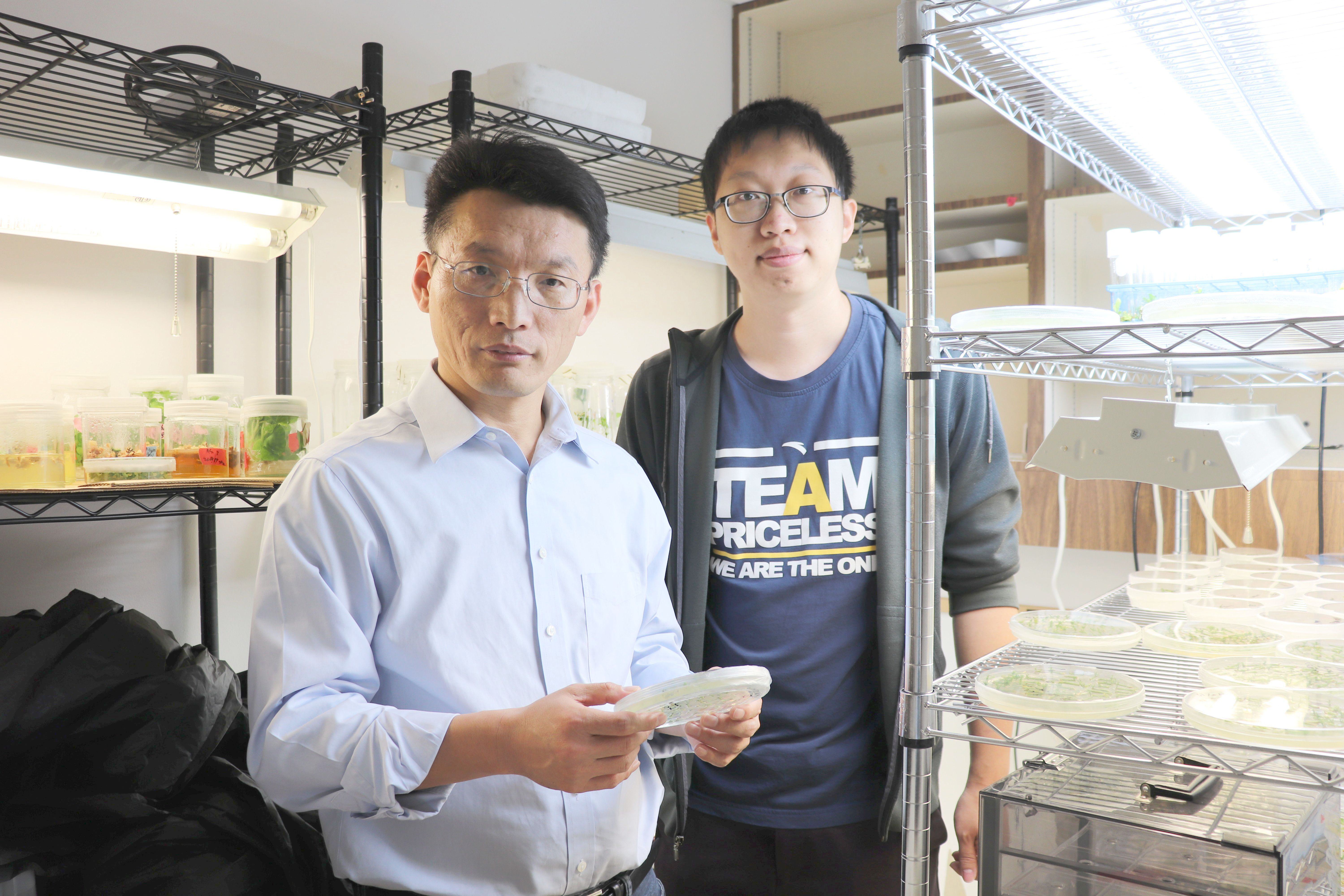Toward Better Food Plants: The Promise of Gene Editing
Erin Anthony
Director, Communications

photo credit: Getty Images
By G.B. Crawford
Since the dawn of agriculture human societies have sought improvements in food plants. Over time this quest has involved such objectives as a sweeter fruit or better resistance to a pest.
Traditional plant breeding can achieve a desired result, but the process may take many years of trial and error to complete and nurture unwelcome traits.
A series of scientific breakthroughs that began in the 1990s has created the opportunity to use a new approach. Researchers discovered that nucleases (enzymes) could remove specific sections of genetic material within a plant. They subsequently found that they could activate the expression of certain genes.
As currently applied, the tool relies upon the plant’s natural biology to enhance a preferred trait without introducing material from another organism – much like traditional breeding.
Genetic engineering of a plant can require more than a decade to develop and exact a price tag of above $100 million. By contrast, researchers note, gene editing costs a fraction of that figure and may be completed much more quickly.
CRISPR
Within the past five years, a new editing technology known as CRISPR has given researchers a more precise way to target a particular gene. (CRISPR is an acronym for an appallingly long description of certain DNA sequences: clustered regularly interspaced short palindromic repeats). It is easier and cheaper to use than other editing techniques.
For farmers, editing promises increased harvest volumes on the same acreage at less cost. New plant varieties can reduce the use of water and fertilizer as well as losses due to pests and disease.
Consumers can benefit from larger crop yields with less production costs by boosting the abundance of nutritious foods and moderating their retail prices.
According to the Food and Agriculture Organization of the United Nations, agriculture must increase productivity by 50% within the next 30 years to supply adequate nutrition for the world’s human population. Most experts warn that current agricultural capability alone cannot meet this need.
Susan Jenkins, managing director of the Innovative Genetics Institute at the University of California, Berkeley, has concluded that gene editing offers a key to meeting the challenge. “We have the ability to modify plants to make them have better water use efficiency and also better nutrient use,” Jenkins said.
“I am optimistic about how we use this technology, how it will be applied and the number of people it will benefit,” she added. “Because we can sequence the entire genome very inexpensively right now, we can make a change in a plant by using CRISPR. We can sequence the entire genome of that new organism and we can say exactly where other changes took place.”
The California facility has been a leader in developing improved cassava plants. Jenkins noted that researchers across the nation are working with other crops, including citrus and tomatoes.
Citrus Greening
Citrus growers in Florida anxiously await the development of new varieties in their long battle with greening disease. Gene editing may develop a tree immune to the malady.

Microbiologist Nian Wang is employing CRISPR to develop such a tree at the University of Florida/Institute of Food and Agricultural Sciences (UF/IFAS) Citrus Research and Education Center in Lake Alfred. Wang, a pioneer in this research, has directed the project for nearly five years.
“We try to optimize gene editing for citrus,” he explained. “We want to identify which genes make the plant susceptible to the pathogen.”
Testing plants is a long-term process. “You want to make sure the genes you modify will not cause unwanted side effects,” Wang said. “You want to make sure you do the right thing by moving carefully.”
A commercially-viable plant will be forthcoming. But he cannot yet offer a timetable for its availability.
“We feel a real responsibility as scientists,” Wang said. “We want to find a solution as soon as possible.”
Geneticist Tong Geon Lee is leading a gene editing project with tomatoes at the UF/IFAS Gulf Coast Research and Education Center in Balm. The goal is to develop a tomato plant that can be harvested by machine.
Lee noted that although this research has already produced new plants for greenhouse testing, he must complete a comprehensive assessment of new varieties before they can be released for general production. “Our first goal is to reduce plant height without damaging the fruit quality,” Lee said. “We don’t want to sacrifice fruit quality and other important traits for Florida growers.”

Private Enterprise
A number of private firms have launched ventures to utilize the technology. Corteva Agriscience, agriculture division of DowDuPont, has invested in CRISPR research for a number of row crops – especially corn and soybeans.
Senior Research Manager Bobby Williams said the company is moving forward with plans for a commercial pilot project with waxy corn. The research team has already developed an edited plant. Kernels of this corn contain high levels of amylopectin, a starch that can be used to thicken foods and make adhesives for labels.
Waxy corn is primarily a Midwestern farm commodity. But Williams said gene editing may reinforce traits that allow it to thrive in other locations.

He is optimistic that the technology will be widely applied to food crops. “I think there are a lot of opportunities when you get into the fruit and vegetable market,” Williams said. “Those are things that consumers can see and understand their benefits.”
A Durham, North Carolina-based firm, Pairwise, is applying CRISPR to row crops as well as fruits and vegetables. Haven Baker, the company’s chief business officer, said the “focus is to make noticeable improvements to the produce aisle. We’re trying to make produce more convenient, more affordable and possibly healthier.”
CEO Tom Adams pointed out that Pairwise is designed to operate as a food company. “The amazing, exciting opportunity that CRISPR brought was the ability to start doing things with crops that are in the consumer space,” Adams said.
He expects that it will have a large-scale impact on fresh produce by the mid-2020s.
The United States Department of Agriculture has expressed approval of gene-edited food plants. In 2018 Secretary of Agriculture Sonny Perdue announced that the agency “does not regulate or have plans to regulate plants that could otherwise have been developed through traditional breeding techniques.” Other agencies, such as the U.S. Food and Drug Administration, have not yet issued official positions.
Communication with Consumers
Researchers and agribusiness leaders acknowledge the obligation to communicate the value of the technology.
“I do believe that the products out there and the things that are nearing production on the market are safe to consume,” the University of California’s Jenkins said. “I would personally consume them.
“In the past we as scientists made the assumption wrongly that if we just got out and educated people about what we are doing, they would understand how safe this is, how practical it is and what our intentions are, it would be accepted,” she explained. “It is more about having a conversation with the consumer and what the consumer wants or needs.”
Haven Baker of Pairwise is confident consumers will be able to understand the benefits of this work because they will have access to the results in the grocery store.
“We think CRISPR will be one of the key tools of this century in meeting the needs of Florida and the rest of the world – to bring better foods to our markets,” Baker said.
G.B. Crawford is director of public relations for the Florida Farm Bureau.
Trending Topics
VIEW ALL